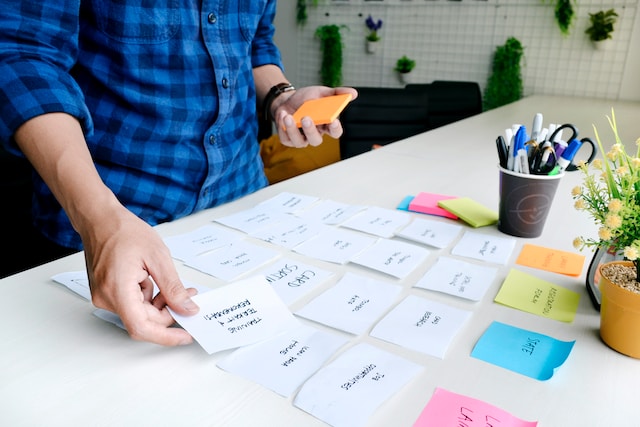Design research is a critical part of the design process, but it can be difficult to know how to conduct effective user research. In this blog post, we will discuss 5 rules for design research that will help you produce better results. By following these rules, you will be able to create designs that are more user-friendly and meet the needs of your target audience.
What is design research?
Design research is a process that helps designers gather data and insights about users, their needs, and the problems they are trying to solve. This data can be used to inform the design of products, services, or experiences. There are many different ways to conduct design research, but all methods should follow certain principles in order to be effective.
The 5 rules for design research in 2022
Rule #1: Define your research goals early on
Before you begin your design research, it is important to take a step back and define your goals. What are you trying to learn? What problems are you trying to solve? By defining your goals upfront, you will be able to create a more focused and effective research plan. For example, if you work in an IT company that wants to design better products, you will need to understand what the users want, their needs, and how they would use your product.
The methodological approach you choose will have a big impact on the quality of your research results.
Be sure to select a method that is well suited to your goals. You could choose any of these design research methods:
- ethnographic research – when you want to understand people’s behavior in naturalistic settings
- diary studies – when you want to understand people’s behavior over time
- user interviews – when you want to understand people’s attitudes and opinions
- surveys – when you want to understand people’s attitudes and opinions
- usability testing – when you want to understand how people use a product or service
Some of them were detailed and discussed in our article on Quantitative and Qualitative research methods

Another important step is to define your target audience. Who are you conducting research for? What are their needs? By understanding your target audience, you will be able to create a more targeted research plan that will yield better results. It will be better for you if you involve your target audience in the design research process as much as possible.
You could use the “User Persona” technic for that. The main idea of the “User Persona” method is to create a fictional character that represents your ideal user. This persona should be based on real data that you have gathered about your users through research.
When creating personas, be sure to include:
- Demographic information (age, gender, location, etc.)
- Psychographic information (lifestyle, values, personality, etc.)
- Behavioral information (needs, goals, pain points, etc.)
- Technical information (skill level, experience with similar products/services)
Once you have fixed your research goals and created your persona, you can use it as a reference point when conducting design research. This will help you stay focused on your target audience and their needs.
Rule #2: Don’t forget the context
While doing design research you should keep in mind that your business and users don’t live in the cosmos. They have a context. The context of use is the environment in which your product or service will be used. This includes physical factors like location and weather, as well as social factors like family, friends, and culture. All of these factors can influence a person’s behavior.
That’s why it’s important to understand the context of use when conducting design research. This data can be gathered through ethnographic research or user interviews.
For example, if you are designing a mobile app for use in public transport, you will need to understand how people use their phones on the go. This includes understanding how they hold their phones, what type of apps they use, and how they interact with other passengers.
Rule #3: Be ready to iterate
Design research is not a one-time event. Design research should be seen as an ongoing process, not a one-time event. This is because user needs and behavior can change over time. For example, users may start using your product in new ways that you didn’t anticipate. They may also encounter new problems that you were unaware of.

By conducting design research on an ongoing basis, you will be able to stay up-to-date on these changes and adapt your product accordingly.
Tip: Don’t forget to document your findings
It’s important to document your findings from design research, as this data can be used to improve your product or service. Documentation also allows you to track your progress over time and see how your product or service is evolving.
There are many ways to document design research findings. Some common methods include writing reports, creating presentations, and making video recordings.
Which method you choose will depend on your preferences and the needs of your team. However, it’s important to make sure that everyone on the team has access to the documentation so that they can use it to improve the product or service.
Rule #4: Be flexible
Design research is not an exact science. There will be times when things don’t go as planned. For example, you may encounter unexpected problems or find that your target audience is not using your product in the way you anticipated.
When this happens, it’s important to be flexible and adapt your plans accordingly. This may mean changing the scope of your research or altering your methodology.
The most important thing is to remain open-minded and willing to adjust your plans as needed. By being flexible, you will be able to get the most out of design research and use it to improve your product or service.
For example, you may encounter unexpected problems or find that your target audience is not using your product in the way you anticipated. When this happens, it’s important to be flexible and adapt your plans accordingly. This may mean changing the scope of your research or altering your methodology.
The most important thing is to remain open-minded and willing to adjust your plans as needed. By being flexible, you will be able to get the most out of design research and use it to improve your product or service.
Rule #5: Make sure you have the right team
Conducting design research is a team effort. It requires input from people with different skills and knowledge.
It’s important to make sure that you have the right mix of people on your team so that you can get the most out of design research.
The team should also be able to work together harmoniously. This means having good communication and collaboration skills. By having the right team in place, you will be able to conduct effective design research that leads to improvements in your product or service.

The perfect team for design research consists of these roles:
- A project manager to keep the research organized and on track
- Researchers to collect data
- Analysts to interpret the data
- A designer to implement the findings
Each team member should have a specific skill set that they can bring to the table. By having a diverse team, you will be able to get the most out of design research.
You may not have all of these roles filled on your team right away. However, as your design research needs grow, you can add new members to the team.
Don’t forget about ethics
When conducting design research, it’s important to adhere to ethical guidelines. This includes obtaining informed consent from participants, protecting their privacy, and ensuring that they are not harmed in any way. Failure to adhere to these guidelines can result in serious consequences, such as legal action or damage to your reputation.
It’s important to remember that design research is a powerful tool that should be used responsibly. By following these rules, you can ensure that your research is conducted ethically and effectively.
Conclusion
Design research is a powerful tool that can be used to improve products and services. However, it’s important to remember that it’s not an exact science. There will be times when things don’t go as planned. When this happens, it’s important to be flexible and adapt your plans accordingly. This may mean changing the scope of your research or altering your methodology.
The most important thing is to remain open-minded and willing to adjust your plans as needed. By being flexible, you will be able to get the most out of design research and use it to improve your product or service.
Photo by Hal Gatewood on Unsplash









